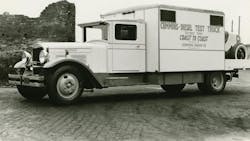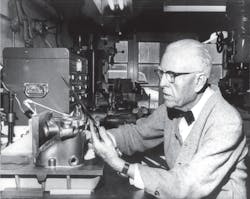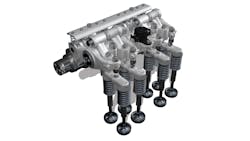The Jacobs compression release engine brake, or "Jake brake," is now in its 60th year of service, with more than 9 million of the systems manufactured by 2019. The compression release brake system, which turns the engine into an air compressor, has helped countless truckers slow down their truck by shifting stopping energy from the brakes and converting it into hot air released through the exhaust.
This has spared wear and tear on brakes the world over, extending their service life. More importantly, by reducing the friction on brakes during long downhill stretches, the Jake brake keeps them from failing when the trucker needs them most.
And it all started when the founding father of U.S. diesel engines nearly lost his life due to failing brakes and an inopportune train schedule.
Ninety years ago, Clessie Cummins, founder and namesake of the engine manufacturer, Cummins Inc., along with two compatriots, hopped in a diesel truck specially outfitted with bunks, storage and stove for an incredulous journey across America to test the endurance of diesel trucks. That 3,214-mile trip from New York to California trailblazed the way for every long-hauler who followed, all for the fuel cost of $11.22, or $194.15 in today’s dollars. But it almost cost Cummins his life.
Dashing down the Cajon Pass on the old Route 66 in California, which has an apex of 3,777 ft. above sea level, Cummins saw a train roaring across the road below. As legend goes, he barely missed T-boning the caboose as the truck crossed the tracks. In the decades that followed, Cummins kept that near-miss — and how to avoid another — close to his heart.
“In the ’50s, when he finally retired from Cummins, he spent some time working on that and trying to figure out how to turn the engine into some sort of compressive brake,” explained Steve Ernest, vice president, Engineering and Business Development for Jacobs Vehicle Systems, the company that formed in 1961 to commercialize the braking innovation.
“As you’re going down along a hill, you get some push back from the engine on the truck. That way the foundation brakes are nice and cool and ready to go in the event you do have to do an emergency stop or really slow down very quickly,” Ernest explained.
This additional retardation helps slow the vehicle, reducing the friction on the foundation brakes. Ernest said the Jake Brake extends brake life by two to three times.
While Volvo uses its own compression brake, Jacobs has 100% penetration on Detroit Diesel and Cummins X15 engines and 92% on Navistar’s A26 engine. A study of International trucks found the $2,500 cost of the system is recouped upon resale.
Owner-operator Grant E. Sheldon found the Jake Brake saves him $1,000 per year in brake maintenance costs.
“I use the Jake Brake like crazy and because of that, I easily double the life of my foundation brakes,” said the Kentucky-based driver with 50 years of trucking experience.
Jacobs has continued to innovate with such solutions as Cylinder Deactivation Technology (CDA), which can cut fuel consumption by 5% while reducing NOx emissions as well.
About the Author
John Hitch
Editor
John Hitch is the editor-in-chief of Fleet Maintenance, providing maintenance management and technicians with the the latest information on the tools and strategies to keep their fleets' commercial vehicles moving. He is based out of Cleveland, Ohio, and was previously senior editor for FleetOwner. He previously wrote about manufacturing and advanced technology for IndustryWeek and New Equipment Digest.



